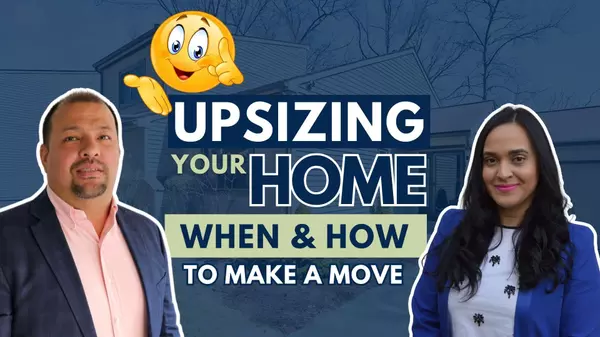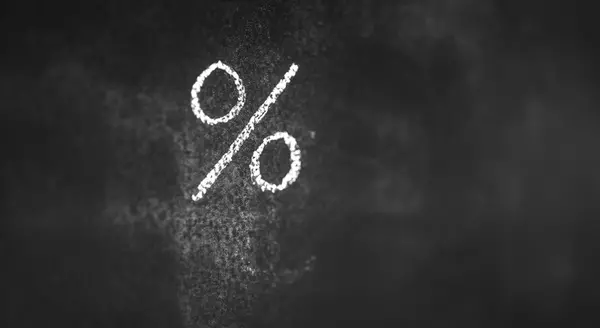
Buying a Home May Make More Financial Sense Than Renting One
If rising home prices leave you wondering if it makes more sense to rent or buy a home in today’s housing market, consider this. It’s not just home prices that have risen in recent years – rental prices have skyrocketed as well. As a recent article from realtor.com says:“The median rent across the 50 largest US metropolitan areas reached $1,876 in June, a new record level for Realtor.com data for the 16th consecutive month.”That means rising prices will likely impact your housing plans either way. But there are a few key differences that could make buying a home a more worthwhile option for you.If You Need More Space, Buying a Home May Be More AffordableWhat you may not realize is that, according to the latest data from realtor.com and the National Association of Realtors (NAR), it may actually be more affordable to buy than rent depending on how many bedrooms you need. The graph below uses the median rental payment and median mortgage payment across the country to show why.As the graph conveys, if you need two or more bedrooms, it may actually be more affordable to buy a home even as prices rise. While this doesn’t take into consideration the interest deduction or other financial advantages that come with owning a home, it does help paint the picture that it may be more affordable to buy then rent for that unit size based on nationwide averages. So, if one of the factors motivating you to move is a desire for more space, this could be the added encouragement you need to consider homeownership.Homeownership Also Provides Stability and a Chance To Grow Your WealthIn addition to being more affordable depending on how many bedrooms you need, buying has two other key benefits: payment stability and equity.When you buy a home, you lock in your monthly payment with your fixed-rate mortgage. And that’s especially important in today’s inflationary economy. With inflation, prices rise across the board for things like gas, groceries, and more. Locking in your housing payment, which is likely your largest monthly expense, can provide greater long-term stability and help shield you from those rising expenses moving forward. Renting doesn’t provide that same predictability. A recent article from CNET explains it like this:“…if you buy a house and secure a fixed-rate mortgage, that means that no matter how much prices or interest rates go up, your fixed payment will stay the same every month. That’s an advantage over renting since there’s a good chance your landlord will raise your rent to counter inflationary pressures.” Not to mention, when you buy, you have the chance to build equity, which in turn grows your net worth. It works like this. As you pay down your home loan over time and as home values continue to appreciate, so does your equity. And that equity can make it easier to fuel a move into a future home if you decide you need a bigger home later on. Again, the CNET article mentioned above helps explain:“Homeownership is still considered one of the most reliable ways to build wealth. When you make monthly mortgage payments, you’re building equity in your home that you can tap into later on. When you rent, you aren’t investing in your financial future the same way you are when you’re paying off a mortgage.”Bottom LineIf you’re trying to decide whether to keep renting or buy a home, let’s connect to explore your options. With home equity and a shield against inflation on the line, it may make more sense to buy a home if you’re able to.

3 Graphs To Show This Isn’t a Housing Bubble
With all the headlines and buzz in the media, some consumers believe the market is in a housing bubble. As the housing market shifts, you may be wondering what’ll happen next. It’s only natural for concerns to creep in that it could be a repeat of what took place in 2008. The good news is, there’s concrete data to show why this is nothing like the last time.There’s a Shortage of Homes on the Market Today, Not a SurplusThe supply of inventory needed to sustain a normal real estate market is approximately six months. Anything more than that is an overabundance and will causes prices to depreciate. Anything less than that is a shortage and will lead to continued price appreciation.For historical context, there were too many homes for sale during the housing crisis (many of which were short sales and foreclosures), and that caused prices to tumble. Today, supply is growing, but there’s still a shortage of inventory available.The graph below uses data from the National Association of Realtors (NAR) to show how this time compares to the crash. Today, unsold inventory sits at just a 3.0-months’ supply at the current sales pace.One of the reasons inventory is still low is because of sustained underbuilding. When you couple that with ongoing buyer demand as millennials age into their peak homebuying years, it continues to put upward pressure on home prices. That limited supply compared to buyer demand is why experts forecast home prices won’t fall this time.Mortgage Standards Were Much More Relaxed During the CrashDuring the lead-up to the housing crisis, it was much easier to get a home loan than it is today. The graph below showcases data on the Mortgage Credit Availability Index (MCAI) from the Mortgage Bankers Association (MBA). The higher the number, the easier it is to get a mortgage.Running up to 2006, banks were creating artificial demand by lowering lending standards and making it easy for just about anyone to qualify for a home loan or refinance their current home. Back then, lending institutions took on much greater risk in both the person and the mortgage products offered. That led to mass defaults, foreclosures, and falling prices.Today, things are different, and purchasers face much higher standards from mortgage companies. Mark Fleming, Chief Economist at First American, says:“Credit standards tightened in recent months due to increasing economic uncertainty and monetary policy tightening.” Stricter standards, like there are today, help prevent a risk of a rash of foreclosures like there was last time.The Foreclosure Volume Is Nothing Like It Was During the CrashThe most obvious difference is the number of homeowners that were facing foreclosure after the housing bubble burst. Foreclosure activity has been on the way down since the crash because buyers today are more qualified and less likely to default on their loans. The graph below uses data from ATTOM Data Solutions to help tell the story:In addition, homeowners today are equity rich, not tapped out. In the run-up to the housing bubble, some homeowners were using their homes as personal ATMs. Many immediately withdrew their equity once it built up. When home values began to fall, some homeowners found themselves in a negative equity situation where the amount they owed on their mortgage was greater than the value of their home. Some of those households decided to walk away from their homes, and that led to a wave of distressed property listings (foreclosures and short sales), which sold at considerable discounts that lowered the value of other homes in the area.Today, prices have risen nicely over the last few years, and that’s given homeowners an equity boost. According to Black Knight:“In total, mortgage holders gained $2.8 trillion in tappable equity over the past 12 months – a 34% increase that equates to more than $207,000 in equity available per borrower. . . .”With the average home equity now standing at $207,000, homeowners are in a completely different position this time.Bottom LineIf you’re worried we’re making the same mistakes that led to the housing crash, the graphs above should help alleviate your concerns. Concrete data and expert insights clearly show why this is nothing like the last time.

3 gráficas para mostrar que esto no es una burbuja de la vivienda
Con todos los titulares y el zumbido en los medios de comunicación, algunos consumidores creen que el mercado de la vivienda está en una burbuja. A medida que el mercado cambia, es posible que se pregunte qué sucederá después. Es natural que se cuelen preocupaciones de que podría ser una repetición de lo que sucedió en 2008. La buena noticia es que hay datos concretos que muestran por qué esto no se parece en nada a la última vez.Hay una escasez de casas en el mercado hoy, no un excedenteEl suministro de inventario necesario para sostener un mercado normal de bienes raíces es de aproximadamente seis meses. Cualquier cosa más que eso es una sobreabundancia y hará que los precios deprecien. Cualquier cosa menos que eso es una escasez y conducirá a una apreciación continua de los precios.Para un contexto histórico, hubo demasiadas casas en venta durante la crisis de la vivienda (muchas de las cuales fueron ventas por menos de la deuda y ejecuciones hipotecarias), y eso hizo que los precios cayeran. Hoy, la oferta está aumentando, pero todavía hay una escasez de inventario disponible.La siguiente gráfica utiliza datos de la Asociación Nacional de Realtors (NAR por sus siglas en inglés) para mostrar cómo se compara esta vez con el desplome. Hoy, el inventario disponible se encuentra con solo un suministro para 3.0 meses al ritmo de venta actual.Una de las razones por las que el inventario sigue siendo bajo es debido a la constante subconstrucción. Cuando se combina eso con la demanda continua de los compradores a medida que los millennials entran en sus años del auge de compra de viviendas, esto continúa ejerciendo una presión al alza sobre los precios de las casas. Esa oferta limitada en comparación con la demanda de los compradores es la razón por la cual los expertos pronostican que los precios de las casas no caerán esta vez.Las normas hipotecarias eran menos estrictas durante el colapsoDurante el período previo a la crisis de la vivienda, era mucho más fácil obtener un préstamo hipotecario de lo que es hoy. La siguiente gráfica muestra datos del Índice de disponibilidad del crédito hipotecario (MCAI por sus siglas en inglés) de la Asociación de Banqueros Hipotecarios (MBA por sus siglas en inglés). Cuanto mayor sea el número, más fácil será obtener una hipoteca.Hasta 2006, los bancos estaban creando una demanda artificial al reducir las normas para solicitar un préstamo y facilitar que casi cualquier persona calificara para un préstamo hipotecario o refinanciara su casa actual. En aquel entonces, las instituciones crediticias asumían un riesgo mucho mayor tanto en la persona como en los productos hipotecarios ofrecidos. Eso llevó a incumplimientos masivos, ejecuciones hipotecarias y caída de los precios.Hoy, las cosas son diferentes, y los compradores se enfrentan a normas mucho más altas de las compañías hipotecarias. Mark Fleming, Economista Principal de First American, dice:“Los estándares de crédito se reforzaron en los últimos meses debido a la creciente incertidumbre económica y el endurecimiento de la política monetaria”. Las normas más estrictas, como los que hay hoy, ayudan a prevenir el riesgo de una erupción de ejecuciones hipotecarias como la última vez.El volumen de ejecuciones hipotecarias no se parece en nada a lo que era durante el desplomeLa diferencia más obvia es el número de propietarios que se enfrentaban a una ejecución hipotecaria después del estallido de la burbuja de la vivienda. La actividad de las ejecuciones hipotecarias ha estado disminuyendo desde el desplome porque los compradores de hoy están más calificados y tienen menos probabilidades de incumplir con sus préstamos. La siguiente gráfica utiliza datos de ATTOM Data Solutions para ayudar a contar la historia:Además, los propietarios de viviendas de hoy son ricos en plusvalía, no utilizada. En el período previo a la burbuja de la vivienda, algunos propietarios estaban utilizando sus casas como cajeros automáticos personales. Muchos retiraron inmediatamente su plusvalía una vez que se acumuló. Cuando el valor de las casas comenzó a caer, algunos propietarios se encontraron en una situación de plusvalía negativa en la que la cantidad que debían en su hipoteca era mayor que el valor de su casa. Algunos de esos hogares decidieron abandonar sus casas, y eso llevó a una ola de propiedades en subasta para la venta (ejecuciones hipotecarias y ventas por menos de la deuda), que se vendieron con descuentos considerables y que redujeron el valor de otras casas en el área.Hoy, los precios han aumentado muy bien en los últimos años, y eso ha dado a los propietarios de casas un alza de plusvalía. Según Black Knight:“En total, los titulares de hipotecas ganaron $2.8 billones en plusvalía negociable en los últimos 12 meses, un aumento del 34 % que equivale a más de $207,000 en plusvalía disponible por prestatario…”Con el promedio de la plusvalía de la vivienda ahora en $207,000, los propietarios están en una posición completamente diferente esta vez.En conclusión,Si le preocupa que estemos cometiendo los mismos errores que llevaron a la caída de la vivienda, las gráficas anteriores deberían ayudar a aliviar sus preocupaciones. Los datos concretos y las ideas de los expertos muestran claramente por qué esto no se parece en nada a la última vez.
Categories
Recent Posts










